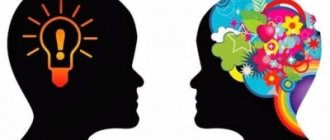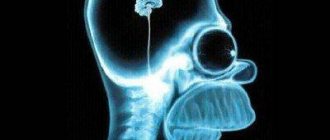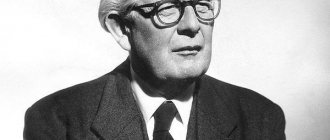Scientific research is an inexhaustible source of information on almost any topic, and this is especially true regarding human thinking. Thanks to the efforts of scientists, today even a completely ordinary person can learn about the brain and intelligence something that will help him become smarter, achieve success and expand his boundaries.
In our article “Development of thinking. What to do to become smarter,” we talked in detail about why you need to become smart in general, and even cited interesting statistics and scientific data. However, the information available to humanity today still leaves a lot of questions unanswered about how a person thinks, what thoughts are, what intelligence is made of, etc.
In our material today, we want to briefly tell you about ten interesting theories about human intelligence that scientists are studying. Some of them have already been refuted, others have been criticized, but it still cannot be ruled out that one day experts will find evidence of this or that theory, after which the understanding of intelligence and its mechanisms will radically change.
One way or another, we believe that this information may seem interesting to anyone who is engaged in self-development and strives to become smarter. It is quite possible that after reading this article you will have some new ideas that you can successfully use in your life.
Birth sequence
Scientists have been trying for decades to understand how birth sequence affects what affects a person's intelligence. But one of the latest studies conducted by the American Psychological Association states that there is no direct relationship between the order of birth of children in a family and their level of intelligence.
Not so long ago, experts believed that it was the first-born children who showed the best results in texts testing intelligence. They explained this by the lack of competition for the attention and care of parents, which allows children to devote more time to receiving and assimilating new information. And children who were born later, according to scientists, experienced a lack of parental care and, as a result, did not show such good results on tests.
As for the latest study specifically, it compared siblings without touching on birth order. And it was possible to establish that there is no significant relationship between birth order and mental characteristics.
Intelligence tests
IQ tests are typically used to assess cognitive abilities, intelligence quotient, and achievement levels. The most common are standard intelligence tests, such as the SAT (Academic Assessment Test) and the Stanford-Binet Test for Gifted Children. These tests evaluate a person's cognitive skills and compare them with those of the general population.
Such tests have been popular for decades among ordinary people, but despite this, today they are increasingly criticized. Some experts, for example, are convinced that there is a certain bias in these tests along various lines: racial, gender, cultural and socio-economic.
Such IQ tests are based on the no longer current idea that human intelligence is something that is determined at birth and does not undergo major changes throughout life. Therefore, scientists who share the opinion that the “old” tests are biased recommend that everyone who takes them not take their results too seriously.
Coefficient and methods for determining it
Intelligence quotient is called IQ. With its help, scientists determine the degree of development of a person’s mental abilities. In rare situations, IQ tests are used to compare intelligence between humans and animals. Researchers were able to determine the IQ of even an earthworm.
IQ is determined by conducting highly specialized tests. With their help, you can find out various factors:
- Absence or presence of mental disorders, pathologies.
- Calculate the “intellectual age” of the individual, which is compared with biological age.
- Level of development of mental abilities.
Creating an IQ test is difficult. This is usually carried out by a team of experienced psychologists together with scientists from other fields.
Craniometry
In the 19th century, scientists believed that a person's intelligence could be assessed by measuring their skull and facial structure. At the very beginning of the development of this theory, the French surgeon Paul Broca made the opposite assumption: he believed that the level of intelligence was influenced by the ratio of the length of the forearm to the length of the shoulder.
The scientist tried to prove that the most intellectually developed race is the race of white people, based only on the length of the arm, but he did not succeed. Then he decided to measure the skull and facial structures to determine how large a brain could fit inside the skull of a particular person. This method seemed to him more suitable for assessment. This was called craniometry.
According to craniometry, the larger the bones of the skull, the larger the brain that is located in it, which means that a person has high intelligence. However, the methodology was subject to constant criticism: many found racial prejudice in it, and also pointed out the lack of evidence base. As a result, at the beginning of the 20th century, craniometry ceased to exist as a technique for assessing intelligence.
But it is still worth noting that research in craniometry contributed to the discovery of brain speech centers and the identification of the concepts of intellectual factor, which we all know today as IQ.
Application
Appendix 1. The test subject's answers to the tasks of the R. Amthauer test
| I | Question | 1 | 2 | 3 | 4 | 5 | 6 | 7 | 8 | 9 | 10 |
| Answer | G | V | d | d | V | A | G | b | d | V | |
| Question | 11 | 12 | 13 | 14 | 15 | 16 | 17 | 18 | 19 | 20 | |
| Answer | A | d | b | A | G | A | V | G | b | A | |
| II | Question | 21 | 22 | 23 | 24 | 25 | 26 | 27 | 28 | 29 | 30 |
| Answer | d | b | A | G | b | G | V | G | V | G | |
| Question | 31 | 32 | 33 | 34 | 35 | 36 | 37 | 38 | 39 | 40 | |
| Answer | G | G | A | V | G | A | A | G | b | G | |
| III | Question | 41 | 42 | 43 | 44 | 45 | 46 | 47 | 48 | 49 | 50 |
| Answer | V | d | b | d | V | G | b | V | b | G | |
| Question | 51 | 52 | 53 | 54 | 55 | 56 | 57 | 58 | 59 | 60 | |
| Answer | V | b | b | V | G | d | V | V | b | G | |
| IV | Question | 61 | 62 | ||||||||
| Answer | fruits - berries | harmful to the body | |||||||||
| Question | 63 | 64 | |||||||||
| Answer | measuring instruments | parts of the face | |||||||||
| Question | 65 | 66 | |||||||||
| Answer | reflection | works of art | |||||||||
| Question | 67 | 68 | |||||||||
| Answer | volume level | embryos | |||||||||
| Question | 69 | 70 | |||||||||
| Answer | symbols | fish | |||||||||
| Question | 71 | 72 | |||||||||
| Answer | needs | alive organisms | |||||||||
| Question | 73 | 74 | |||||||||
| Answer | tools | degrees of comparison | |||||||||
| Question | 75 | 76 | |||||||||
| Answer | religious sanctions | approval-disapproval | |||||||||
| V | Question | 77 | 78 | 79 | 80 | 81 | 82 | 83 | 84 | 85 | 86 |
| Answer | 85 | 630 | 235 | 24 | 36 | 60 | 35 | 50 | 720 | 90 | |
| Question | 87 | 88 | 89 | 90 | 91 | 92 | 93 | 94 | 95 | 96 | |
| Answer | 52,5 | 9 | 45 | 60 | 16 | 26 | 36 | 5 | 42 | 4 | |
| VI | Question | 97 | 98 | 99 | 100 | 101 | 102 | 103 | 104 | 105 | 106 |
| Answer | 27 | 26 | 25 | 16 | 62 | 31 | 51 | 7 | 8 | 12 | |
| Question | 107 | 108 | 109 | 110 | 111 | 112 | 113 | 114 | 115 | 116 | |
| Answer | 2 | 13 | 42 | 9 | 12 | 71 | 15 | 17 | 63 | 14 | |
| VII | Question | 117 | 118 | 119 | 120 | 121 | 122 | 123 | 124 | 125 | 126 |
| Answer | b | G | V | V | d | V | A | A | A | b | |
| Question | 127 | 128 | 129 | 130 | 131 | 132 | 133 | 134 | 135 | 136 | |
| Answer | A | G | d | G | V | d | G | G | b | d | |
| VIII | Question | 137 | 138 | 139 | 140 | 141 | 142 | 143 | 144 | 145 | 146 |
| Answer | d | G | d | A | G | A | b | d | A | G | |
| Question | 147 | 148 | 149 | 150 | 151 | 152 | 153 | 154 | 155 | 156 | |
| Answer | G | b | d | d | d | G | d | A | d | d | |
| IX | Question | 157 | 158 | 159 | 160 | 161 | 162 | 163 | 164 | 165 | 166 |
| Answer | 4 | 5 | 3 | 2 | 5 | 1 | 2 | ||||
| Question | 167 | 168 | 169 | 170 | 171 | 172 | 173 | 174 | 175 | 176 | |
| Answer | 3 | 3 | 4 | 1 | 5 | ||||||
Appendix 2. Subject's answers to the Raven test tasks
| A | Question | 1 | 2 | 3 | 4 | 5 | 6 | 7 | 8 | 9 | 10 | 11 | 12 |
| Answer | 4 | 5 | 1 | 2 | 6 | 3 | 6 | 2 | 1 | 3 | 4 | 1 | |
| B | Question | 13 | 14 | 15 | 16 | 17 | 18 | 19 | 20 | 21 | 22 | 23 | 24 |
| Answer | 2 | 6 | 1 | 2 | 1 | 3 | 5 | 6 | 4 | 3 | 4 | 6 | |
| C | Question | 25 | 26 | 27 | 28 | 29 | 30 | 31 | 32 | 33 | 34 | 35 | 36 |
| Answer | 8 | 2 | 3 | 8 | 7 | 4 | 5 | 1 | 7 | 6 | 1 | 2 | |
| D | Question | 37 | 38 | 39 | 40 | 41 | 42 | 43 | 44 | 45 | 46 | 47 | 48 |
| Answer | 3 | 4 | 3 | 7 | 8 | 6 | 4 | 4 | 1 | 2 | 5 | 6 | |
| E | Question | 49 | 50 | 51 | 52 | 53 | 54 | 55 | 56 | 57 | 58 | 59 | 60 |
| Answer | 7 | 6 | 5 | 2 | 1 | 5 | 1 | 5 | 3 | 2 | 1 | 5 |
Heredity
Many people believe that if a child is born into a family of smart parents, then he will also be smart, but is this true? Some studies confirm this, and some deny it, but it is known for sure that heredity still has an impact on a person’s IQ.
However, we must not forget about the surrounding conditions and the fact that culture plays a role in the formation of human intelligence. But nothing can be said with certainty about intelligence genes. Research in this area suggests that the number of genes responsible for intelligence can be 40 or 80 percent.
Scientists today are actively studying both the influence of genes on intelligence and the influence of upbringing. This area is still gaining momentum, and researchers hope that relevant experiments will help not only understand how the mind functions, but also better understand the intricacies of a person’s character and behavior, as well as the characteristics of the psyche.
In this case, of particular importance is the fact that a person’s mind is not influenced by race, and heredity cannot be considered as the only factor determining intellectual potential.
What factors influence a person's mental abilities?
The level of intelligence can vary significantly among different people. Among us there are intellectuals, slow-witted people, people with average abilities and those who are commonly called mentally retarded. But why are people so different mentally?
Various studies have shown that the formation of human mental abilities is influenced primarily by genetic factors. Upbringing, environmental influences and random external influences play a much smaller role.
However, the external environment also has a certain significance for the formation of intelligence. These are factors such as the standard of living of the family, the level of education of parents, the nature of upbringing, the availability of school education for children (in American studies, students from good urban schools turned out to be more intellectual than students from modest rural schools). Research has even established the influence of such individual factors as annual family income, the size of the house and its cost, the relationship between parents, etc.
The role of nutrition cannot be ruled out. The brain is a rather voracious structure, and a lack of nutrients can lead to a decrease in its ability to process information.
Primary intelligence potential
At the beginning of the 20th century, American psychologist Louis Thurstone proposed that intelligence consists of seven components. This theory differed significantly from the prevailing ideas about intelligence at that time, according to which intelligence was based on one factor (there was no idea what exactly this factor was).
According to Thurstone, the seven components on which intelligence is based included:
- mastery of words;
- verbal comprehension;
- speed of perception;
- ability to count;
- ability to think logically;
- associative memory;
- spatial visualization.
Thurstone's theory has not stood the test of time, but his research still has supporters today, especially in the field of psychometry, a science that conducts quantitative studies of psychological measurements.
Intelligence and gender
Today we all pay attention to the fact that the thinking of men and women is different, but there are still no facts that would confirm that one sex is smarter than the other. Although research in this area is very popular today.
Scientists have been able to identify two types of human brain. Type 1 brains contain the largest amount of gray matter, which is responsible for processing information, while type 2 brains contain more white matter, the tissue that connects the gray matter. So research shows that men have 6.5 times more gray matter in their brains, and women have 10 times more white matter in their brains.
What conclusions can be drawn? In short, the predominance of one type of brain tissue or another does not affect brain performance. The only difference is that men and women solve different problems in slightly different ways and achieve different results.
Bibliography
- Anastasi A., Urbina S. Psychological testing. – St. Petersburg: Peter, 2001. – 688 p. – (Series “Masters of Psychology”).
- Druzhinin V.N. Psychology of General Abilities - St. Petersburg: Peter Publishing House, 1999. - 368 pp.: (Series “Masters of Psychology”).
- Eliseev O.P. Workshop on personality psychology - St. Petersburg: Publishing House "Peter", 2000. - 560 p. – (Series “Workshop in Psychology”).
- Maklakov A.G. General psychology. – St. Petersburg: Peter, 2002. – 592 p. – (Series “Textbook of the New Century”).
- Shapar V.B., Timchenko A.V., Shvydchenko V.N. Practical psychology. Tools. – Rostov n/d: publishing house “Phoenix”, 2002. – 688 p.
General intelligence
In our article we cannot fail to mention the idea of general intelligence, because many theories are built on it, including the theory called the G factor. Scientific research suggests that there is general intelligence, and it does not depend on the results shown by what -one person compared to the general mass of people.
Typically, information about the characteristics of the human intellect is obtained through psychometry. But now there are innovative techniques, the use of which has allowed scientists to suggest that the brain has special sections and neural connections that contribute to the creation of general intelligence.
This theory continues to be actively studied, and it is likely that very soon scientists will be able to prove that both individual and universal intelligence have a biological basis.
The Problem of Abilities
What are abilities? Abilities are qualities, abilities or skills that distinguish one person from another. They can be mathematical, musical, physical and many others. They are based on innate abilities (memory, thinking, attention). And also the features include giftedness, talent and even genius.
Abilities are the individual psychological characteristics of a person. They, in turn, ensure the successful implementation of certain activities. Since they are purely individual, the speed and result of performing the same type of activity differ among people.
If you look at a group of people, it is impossible to determine their level of development and what abilities they have. But if you take a certain person, study his intellect, find out his abilities and inclinations, and then compare him with another person, then you can understand that these concepts are purely individual and absolutely identical people do not exist.
Multiple Intelligences
According to the theory of multiple intelligences, the human mind includes a whole range of different types of intelligence. The author of this theory, American psychologist Howard Gardner, says that intelligence is the ability to create and maintain values, solve problems and expand one's knowledge by solving these problems.
The scientist believes that one unique intelligence of each person consists of nine types of intelligence, including:
- spatial intelligence;
- musical intelligence;
- existential intelligence;
- intrapersonal intelligence;
- interpersonal intelligence;
- kinesthetic (bodily) intelligence;
- linguistic intelligence;
- naturalistic intelligence;
- mathematical (logical) intelligence.
It is interesting that since the development of this theory in 1983, unlike many others, it has not become outdated and has not been refuted by anyone. But, of course, to fully confirm it, a lot more research and experimentation is required.
tabula rasa
Tabula Rasa (Latin for “blank slate”) is the theory that humans are born with “pure minds.” For many centuries this theory has been supported by psychologists and philosophers. She assumes that at the moment of birth a person’s mind is empty and fresh, has enormous potential and awaits filling with life experiences and emotions.
As we have already said, active debate continues today about what is most important for intelligence - education or genetics; should we consider a person exclusively a creation of nature or does the environment play a larger role?
In recent decades, many studies have been conducted in which scientists studied twins separated at birth, because they “contain” the same genetic material, but the environment in which they grow and develop is different. And, according to scientists, a person’s mind, like his other individual traits (for example, gender identity), is a combination of inherited genes, experiences and environmental influences.
Triarchic theory of intelligence
The author of this theory is American psychologist Robert Sternberg. In developing it, he went against all ideas and assumptions about general intelligence and standard mental abilities. Intelligence for a scientist was not just an academic factor. Sternberg put forward the hypothesis that every person has a practical intelligence, significantly different from academic intelligence, but equal in importance to it.
The triarchic theory of intelligence includes three subtheories:
- contextual theory about the interaction of intelligence with experience of the external world;
- component theory about the connection of intelligence with the inner world;
- an empirical theory about a person's ability to adapt to situations and perform certain tasks.
The last subtheory is divided into two directions:
- how a person copes with new impressions and tasks;
- how a person copes with well-known experiences and tasks.
The triarchic theory turned out to be very interesting, but, of course, it also had critics. They say that it is more like a description of a set of practical skills needed by a person than an explanation of how intelligence functions, and that Sternberg is unable to provide information based on direct observations.










